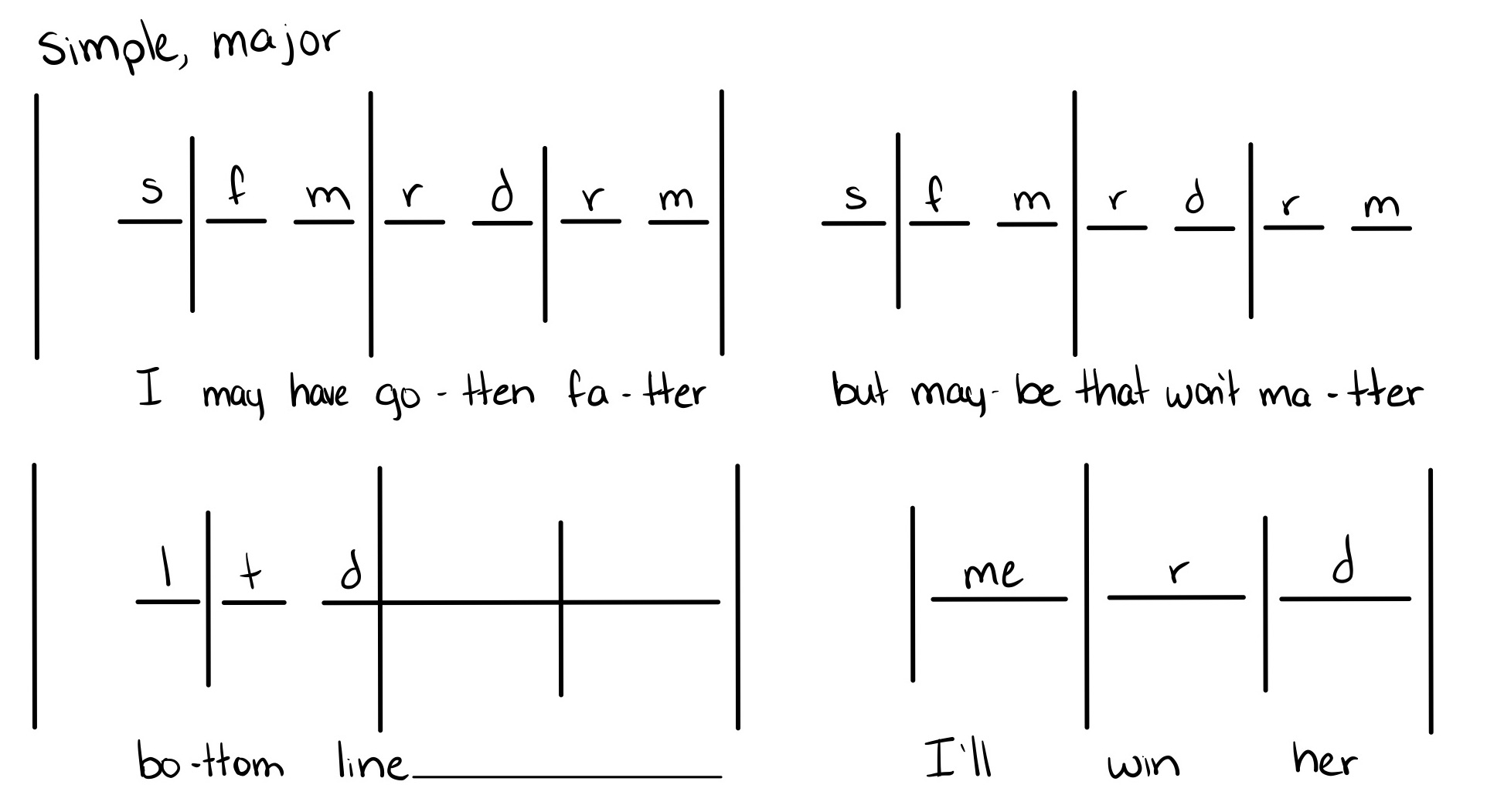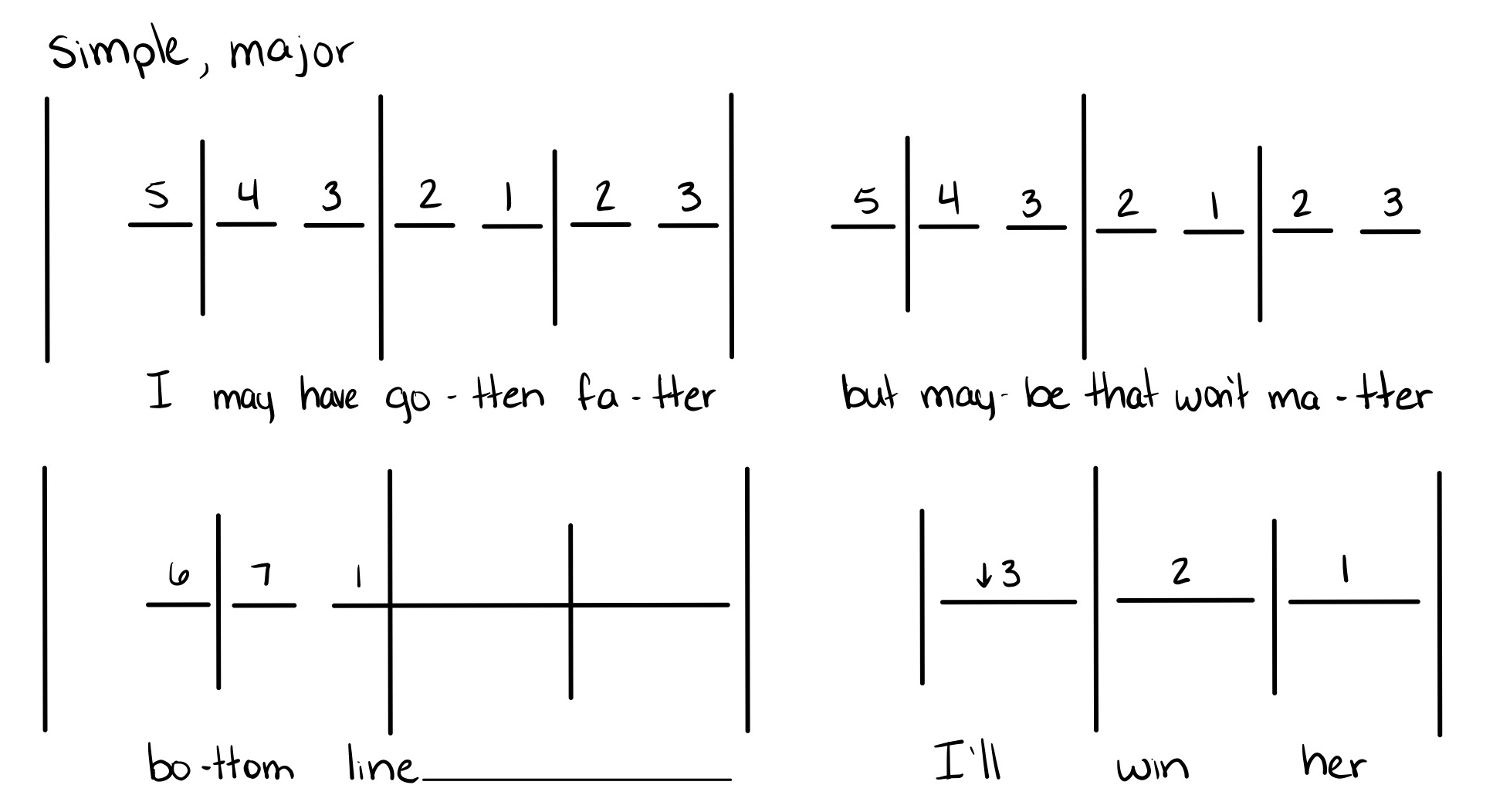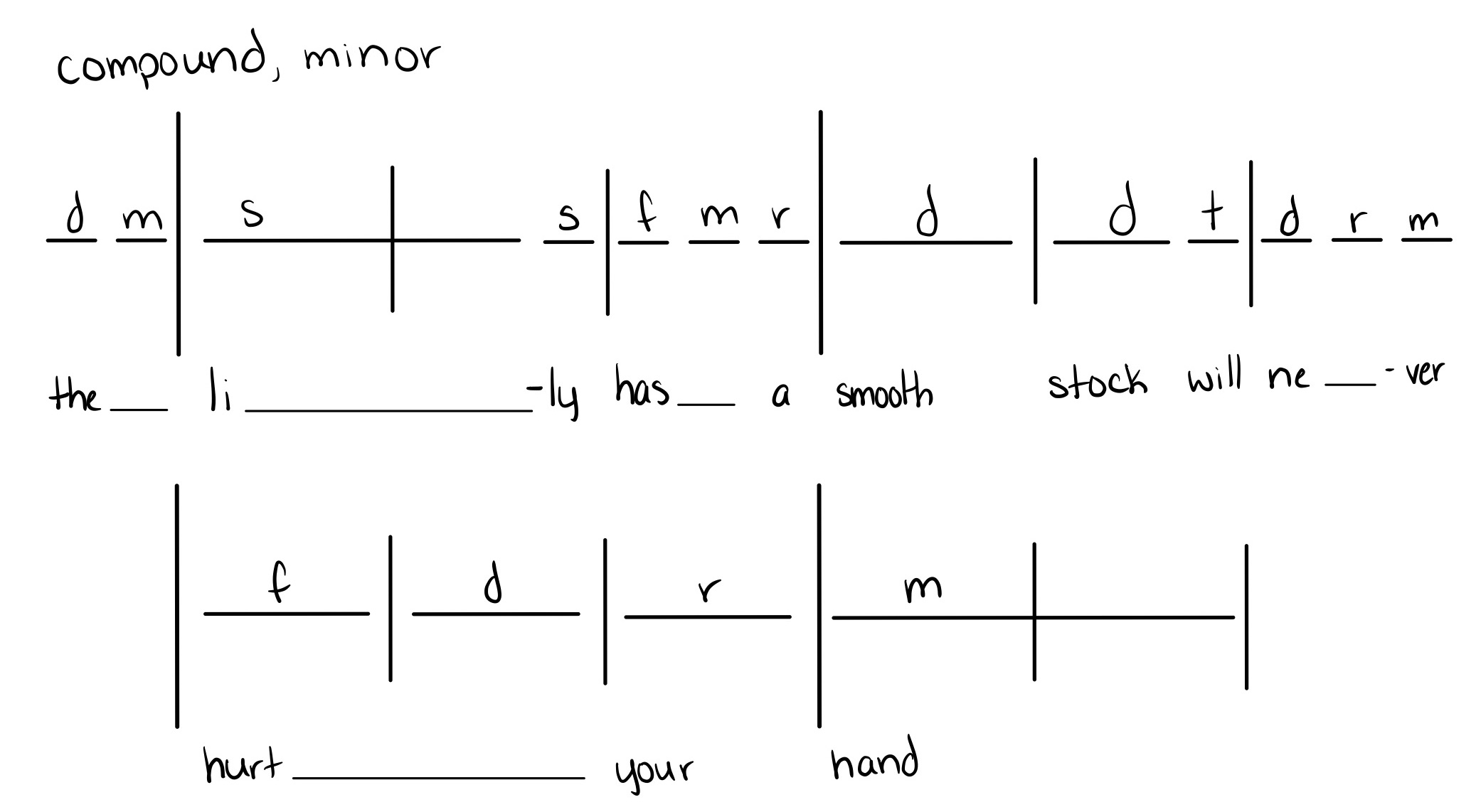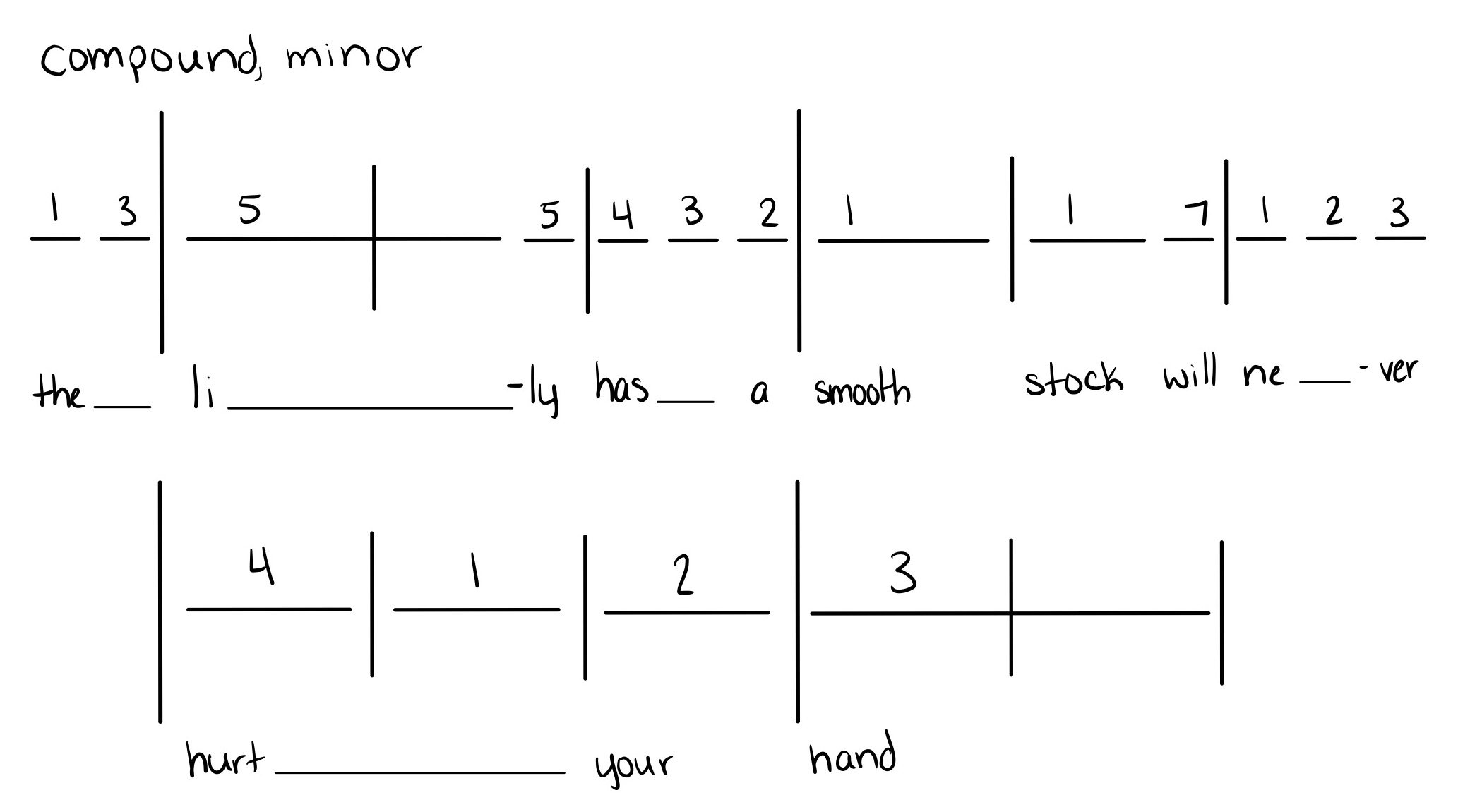Guide to Protonotation
Protonotation, developed by pedagogue Gary Karpinski, is a method of representing how rhythms relate to a meter and how notes relate to a key, without the complexities of staff notation.
Rhythm
In protonotation, every beat is represented by a short vertical line. Every downbeat is represented by a longer vertical line. Be sure that you have a vertical line for every beat that you hear, and that you don’t start with a longer vertical line unless the music starts on a downbeat.
Since this system doesn’t typically represent beat divisions, we will write either “simple” or “compound” up above the metric grid.
Pitch
The best way to represent the pitches of music in a key is almost always with scale degrees. For people without absolute pitch, this may be the only way to figure out what’s going on. For people with absolute pitch, it makes sure we’re building “tonal” hearing skills, which help us understand and track the relationships among pitches and between pitches and key.
Scale degrees are typically represented either as Arabic numerals (1, 2, 3, etc.) or as moveable-do solfège syllables. For speed, when writing solfège syllables, we often simply use the first letter of the syllable. We can represent raised and lowered pitches with sharps or flats, with up and down arrows, or, in moveable-do solfège, by adding the relevant second letter of the syllable (“i” for raised, “e” for lowered, except “re,” which becomes “ra” when lowered). These can simply be written above or below the rhythmic protonotation/shorthand.
Example: Protonotation in simple meter
Protonotation:
Solfège:

Scale Degrees:

Example: Protonotation in compound meter
*note that the melody starts at 0:19 seconds
Protonotation:
Solfege:

Scale Degrees:


